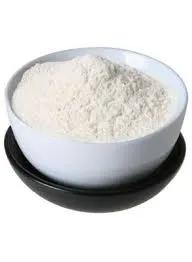
កញ្ញា . 25, 2024 16:26 Back to list
hydroxyéthyl cellulose
Hydroxyethyl Cellulose Versatile and Essential in Modern Applications
Hydroxyethyl cellulose (HEC) is a non-ionic, water-soluble polymer derived from cellulose, a natural polysaccharide found in the cell walls of plants. Recognized for its unique properties, HEC has garnered significant attention across various industries, including pharmaceuticals, cosmetics, and construction. This article explores the characteristics, manufacturing process, applications, and advantages of hydroxyethyl cellulose.
Chemical Structure and Properties
The chemical structure of hydroxyethyl cellulose is formed by the reaction of ethylene oxide with cellulose. The process introduces hydroxyethyl groups onto the cellulose backbone, enhancing its solubility in water and modifying its rheological properties. HEC is available in different molecular weights, which influences its viscosity and gelling capabilities. This versatility allows formulators to tailor its application in various formulations.
One of the notable properties of HEC is its ability to thicken, stabilize, and form gels. In solution, HEC demonstrates pseudo-plastic behavior, meaning its viscosity decreases under shear stress, making it easy to handle during application. Moreover, it exhibits excellent film-forming capabilities, making it ideal for coatings and as a binder in various formulations.
Manufacturing Process
The manufacturing of hydroxyethyl cellulose involves several steps, beginning with the extraction of cellulose from natural sources such as wood pulp or cotton. The cellulose is then reacted with ethylene oxide in an alkaline medium, allowing for the substitution of hydroxyethyl groups. The resulting product undergoes purification and drying to obtain HEC in powder form. This process can be fine-tuned to achieve varying degrees of substitution and molecular weights, catering to different industry requirements.
Applications in Various Industries
hydroxyéthyl cellulose

1. Pharmaceuticals HEC is widely used in the pharmaceutical industry as a thickening agent in topical formulations, gels, and emulsions. It enhances the viscosity of liquids, ensuring a consistent and stable delivery system for active ingredients. Furthermore, its film-forming properties are beneficial in the formulation of controlled-release drug delivery systems.
2. Cosmetics and Personal Care In cosmetic formulations, hydroxyethyl cellulose serves as a thickener and stabilizer in various products, such as lotions, shampoos, and facial cleansers. It enhances the texture and feel of products and allows for improved spreadability. Its ability to form a protective barrier on the skin makes it an appealing ingredient in skin creams and sunblocks.
3. Construction HEC is a valuable additive in construction materials, particularly in cement-based products. It enhances workability, water retention, and adhesion of mortars and plasters, ensuring improved performance during application and curing. Additionally, HEC contributes to the durability and longevity of construction materials.
4. Food Industry Although not as common as in other industries, hydoxyethyl cellulose can be used as a food additive. Its thickening properties can improve the texture of various food products without altering taste, making it an ideal ingredient in sauces, dressings, and dairy products.
Advantages
Hydroxyethyl cellulose offers numerous advantages, making it a preferred ingredient in many formulations. Its non-toxic and biodegradable nature aligns with the growing demand for sustainable and eco-friendly products. Additionally, its versatility, ease of use, and effectiveness in modifying rheological properties make it an invaluable component across diverse applications.
In conclusion, hydroxyethyl cellulose is a significant polymer with a wide range of applications due to its unique properties and versatility. From pharmaceuticals to cosmetics and construction, HEC plays an essential role in the formulation and performance of various products. As industries continue to innovate, the demand for functional and performance-driven ingredients like hydroxyethyl cellulose will undoubtedly grow, underscoring its importance in modern applications.
-
The Widespread Application of Redispersible Powder in Construction and Building Materials
NewsMay.16,2025
-
The Widespread Application of Hpmc in the Detergent Industry
NewsMay.16,2025
-
The Main Applications of Hydroxyethyl Cellulose in Paints and Coatings
NewsMay.16,2025
-
Mortar Bonding Agent: the Key to Enhancing the Adhesion Between New and Old Mortar Layers and Between Mortar and Different Substrates
NewsMay.16,2025
-
HPMC: Application as a thickener and excipient
NewsMay.16,2025
-
Hec Cellulose Cellulose: Multi functional dispersants and high-efficiency thickeners
NewsMay.16,2025







